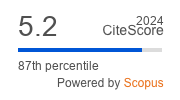Article | Open Access
The Meaning of ‘Limited Pluralism’ in Media Reporting under Authoritarian Rule
| Views: | 8227 | | | Downloads: | 3795 |
Abstract: Research on mass media in authoritarian regimes focuses more on state mechanisms of control than on actual media reporting and on moments of crises much more than on times of stable functioning of the regime. In order to shed more light on the role of journalistic mass media in authoritarian regimes, this article deals with the actual limits of pluralism in media reporting regarding policy issues in ‘ordinary’ authoritarian politics. Looking at pluralism in sources (i.e., actors being quoted) and pluralism in opinion, the article also deals with the often assumed increasing degree of pluralism from TV over print media to the Internet. This study is based on a qualitative content analysis of media reporting on export pipelines in three post-Soviet authoritarian regimes (Azerbaijan, Kazakhstan, and Turkmenistan). The text corpus comprises 3,618 media reports from 38 different journalistic media outlets published between 1998 and 2011. Two major results of the study are, first, that concerning the degree of pluralism, the differences between types of media are country specific, and, second, that ‘limited pluralism’ seems to be a misnomer, as the political opposition—at least in our cases—regularly does not have a voice at all.
Keywords: authoritarian regimes; authoritarianism; internal pluralism; mass media reporting; media content analysis
Published:
© Andreas Heinrich, Heiko Pleines. This is an open access article distributed under the terms of the Creative Commons Attribution 4.0 license (http://creativecommons.org/licenses/by/4.0), which permits any use, distribution, and reproduction of the work without further permission provided the original author(s) and source are credited.


